The best way to recognize customer value is to be open to discovery.
—Mario Moreira
Bold moves in space exploration occurred because we dared to discover what lies beyond our world. Prior to our journeys into space, there were discoveries of unknown places on earth made by Portuguese, Italian, English, Spanish, Norse, Dutch, and Chinese explorers, among others. In our desire to discover the unknown and manage risks, a discovery mindset was applied.
The Portuguese didn’t get to India on their first sailing trip, but, instead, each expedition ventured just a bit farther than the previous one. This allowed what was learned to travel back to Portugal. There, cartographers updated maps with the new information the explorers provided about the landscape, sea hazards, tides, details of the local flora and fauna, and sailing lanes for the next expedition.
People involved in space exploration had similar experiences. The moon wasn’t reached the first time humans broke through the earth’s atmosphere. Instead, attempts where made to go a little farther into the universe with each rocket launch, testing the capability of the technology along the way. During the exploration of both the earth and space, a variety of innovations occurred, making it possible to get to the next leg of the journey.
A discovery mindset is a belief that acknowledges uncertainty and applies a variety of thinking approaches to continuously learn through incrementally gathering knowledge of what lies beyond. This includes a combination of a curiosity to learn and a drive to innovate. A discovery mindset isn’t one where you voyage haphazardly about, but, instead, apply methodical concepts that lead to a more informed journey.
Agile Pit Stop
A discovery mindset is a belief that acknowledges uncertainty and applies a variety of thinking approaches to continuously learn what lies beyond.
A discovery mindset leads with establishing behaviors of learning as we go, focusing on what we don’t know, and using various thinking approaches to gain knowledge toward the direction of customer value. A discovery mindset avoids certainty thinking as well as upfront and big-batch approaches.
Discovery Mindset for Business
From a business perspective, the discovery mindset ensures that you are not using your funding and investment toward a path of false certainty, but rather heading toward a path where you learn the direction. You course-correct when you discover that you are headed in the wrong direction.
Using a discovery mindset has four primary benefits. The first benefit is that it helps you adapt toward the direction of customer value and (hopefully) product success. The second is that it helps with innovative work because less is known at the beginning so discovery of customer value becomes more important. The third is that, in relation to a transformation (since discovery involves working in increments), it can be much easier for people to commit to a short-term experiment than to commit to a long-term, often unknown, future. The fourth benefit is that it helps move an enterprise toward an empirical and disciplined approach to work.
Enhancing the Culture with Discovery
In Chapter 5, I discussed the importance of activating an Agile culture within your Agile galaxy. This means all roles from team to management and operational roles (HR, finance, and so on) in all quadrants of the galaxy should embrace the Agile and discovery mindset. This enhances the third dimension of your Agile galaxy as illustrated in Figure 10-1.
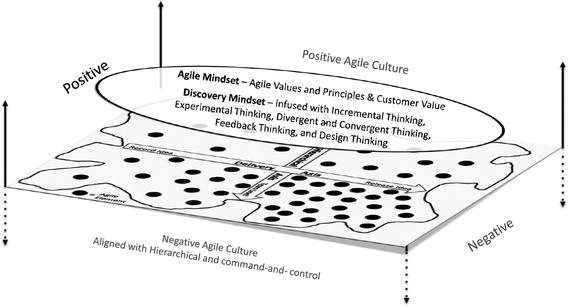
Figure 10-1. Third dimension of the Agile galaxy where the discovery mindset lives
It is within this third dimension of your Agile galaxy that the discovery mindset and thinking approaches belong. The discovery mindset complements the Agile cultural attributes of COMETS (Collaboration, Ownership, Motivation, Empowerment, Trust, and Safety) discussed in Chapter 7. While COMETS are attributes you want to see in the people within an Agile galaxy, the discovery mindset contains the approaches people can use to methodically learn what is valuable to the customer. The goal of both is to cultivate positive behaviors. The three-dimensional view can help you understand your starting point, where the discovery mindset is occurring, and where you need to focus.
Leading with a Discovery Mindset
Imagine that you started your Agile transformation with a discovery mindset and thinking approaches instead of mechanical practices. The advantage of leading with a focus on mindset is that it sets the tone for the behaviors that you are looking for in people. Additionally, it avoids the trap of people thinking that Agile is about mechanically applying Agile processes or practices.
Agile Pit Stop
Leading with a discovery mindset and thinking approaches sets the tone for the behaviors needed for an Agile culture and how to adapt toward customer value.
As discussed in Chapter 5, a mechanical implementation of Agile processes and practices tends to ignore the cultural aspects of Agile. Since Agile is a cultural change, consider starting your Agile transformation from a cultural perspective with a strong focus on the discovery mindset. Readying the mind with the discovery mindset, thinking approaches, and Agile values and principles conditions the mind so that when processes and practices are applied, they are done so with the right behaviors.
What are some of the various thinking approaches that enable a discovery mindset? They are incremental thinking, experimental thinking, divergent and convergent thinking, feedback thinking, and design thinking. What shouldn’t surprise you is that these concepts are often applied in tandem to achieve the best results. For example, design thinking involves incremental and divergent thinking. Experimental thinking includes incremental thinking and feedback thinking. The discovery mindset embraces them all.
Incremental Thinking
Incremental thinking is an approach where you embrace thinking in small pieces and in short timeframes. Instead of making big bets with limited knowledge, you take smaller bets and use what was learned in the current increment to course-correct your direction for the next increment. This reduces risk and prevents investment from going down the wrong path for too long.
In Agile, there are the concepts of iteration and increment. These two concepts are confusing for some in that they are often used interchangeably while they are in fact different. An iteration is the period of time a team works to build something. In Scrum, the concept of a sprint is used to provide a team with a period of time (for instance, one to four weeks) to produce a deliverable. The deliverable from an iteration is termed an increment.
An increment is the outcome of an iteration and, if aligned with the Agile values and principles, should produce working software or product. As it relates to incremental thinking, the goal is to move away from big-batch delivery and instead think in smaller batches aligning with the Agile principle of “deliver working software frequently, from a couple of weeks to a couple of months, with a preference to the shorter timescale.” Figure 10-2 illustrates the incremental thinking approach toward customer value.
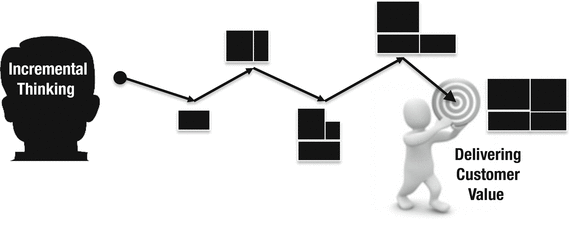
Figure 10-2. Applying incremental thinking toward delivering customer value
Incremental thinking supports the concept of learning what the customer finds as valuable. Incremental thinking allows us to shed the dangerous attitude of pretend or arrogant certainty and instead explore what the customer needs. Instead of fixing customer needs up front, you iteratively learn your way to what the customer finds valuable by building increments of product that the customer can inspect and provide feedback for.
Experimental Thinking
Experimental thinking is an approach where you embrace a more systematic way of navigating toward certainty. Instead of guessing, this type of thinking uses a scientific approach where you hypothesize your next move. It is meant to provide more rigorous methods toward identifying customer value.
As you consider customer needs at the beginning of a project, you are at the time where you have the least information or evidence of the need. Instead of guessing, you establish a hypothesis for the next increment of work based on the information currently available and what may be the right direction.
As illustrated in Figure 10-3, you conduct your experiment and apply measurable data and feedback loops (that is, validating with customer demonstrations and more) to identify what you have learned. The results provide you knowledge and help you determine where to go next by either affirming or rejecting the hypothesis. Then you take what was learned into the next incremental experiment where adaptation occurs.
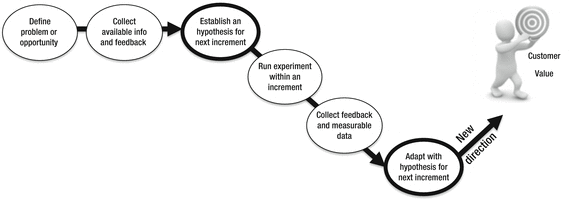
Figure 10-3. Applying experimental thinking toward customer value
In the context of a business or new product idea, a discovery mindset helps you systematically learn whether an idea has value to your customers. Each change—whether a new feature, a change to an existing feature, or removal of a feature—should start with a hypothesis.
Power of the Hypothesis
A hypothesis is an idea or supposition based on current evidence as your starting point. The ingredients of this hypothesis are a hypothesis statement related to a customer need, time-boxed iteration, and customer feedback to prove or disprove a direction. In other words, it should no longer be good enough to guess which direction you should move.
Any affirmation or rejection of a hypothesis is not meant to be a judgment. Instead, it should be looked at as a course-correction toward customer value. If you have hypothesized correctly, you may invest further effort into continuing with the hypothesis. If you have not, create a new hypothesis based on the feedback received.
Agile Pit Stop
The best way to learn what the customer wants is by establishing a hypothesis and then running an experiment to determine if it is valid or not.
Drilling down, the elements of the hypothesis statement should include the change you are trying, the impact you expect from the change, and who should be impacted. The “change” should include the name of the change (feature, app, and so on). The “impact” should be quantifiable and data-driven involving an increase or decrease in a current measure. The “who” should include a persona or market segment that is being targeted. You may also add a timeframe for how long the test will run. Here are three examples:
The new feature will be liked by 60% of our current user base in the next demonstration event.
The new checkout design will decrease drop rates by 30% for shoppers who have goods in shopping carts over the next 30 days.
The new app will increase revenue by 10% for mobile app users over the next four weeks.
You should consider certainty-building activities as an experiment. It is important to have a discovery mindset in all of the work you do, particularly when it comes to moving toward the direction of customer value.
Divergent and Convergent Thinking
Divergent thinking embraces an approach that promotes collaboration to generate ideas and numerous solutions with no censoring of ideas. Once an allocated time box to share and discuss ideas and options is concluded, divergent thinking is paired with convergent thinking to more quickly come to consensus. This is illustrated in Figure 10-4.
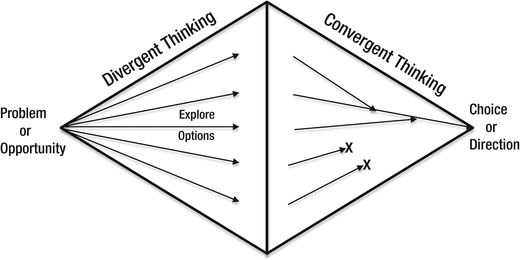
Figure 10-4. Divergent and convergent thinking
A traditional divergent technique is brainstorming, which focuses on generating ideas in an unstructured manner. But due to the fast pace of most companies, we are quick to shut down brainstorming by criticizing the opinions of others (including our own). Because of this, I recommend ten minutes of silence for all brainstorming activities to ensure all ideas get a chance to be revealed prior to any discussion.
People generate their ideas with no discussion so no one’s ideas are dismissed by people who are more assertive. As you may guess, often the quiet team members (that is, introverts) have great ideas and a divergent “quiet” period allows the talented introverts to get their ideas on the table. The key to divergent thinking is that there is absolutely no censorship of ideas or solutions coming forth. All ideas are valuable.
Once the divergent time box is concluded, it is time to commence with convergent thinking. Convergent thinking is an approach to systematically limit your options and focus on one direction. From divergent thinking, there are often more ideas and possible solutions than can be handled.
In convergence, various techniques can be applied to bring together ideas. This may include looking for affinities where common themes may arise from some of the ideas. It can also include red-dot voting, a non-confrontational prioritization technique where people quietly place their dots on what they think are the top ideas for solving the problem. Ideas with the largest number of dots are discussed until a top option is selected.
The value of divergent thinking cannot be underscored. Spending as little as a few hours of collaborative brainstorming coming up with ideas is a drop in the bucket compared to the thousands of hours spent in building a solution. The tiny investment is worth ensuring that many options are made available.
Also, the divergent and convergent pairing can occur in a continuous manner. For every customer need expressed in a user story in the beginning of an iteration or sprint, divergent thinking can be used in sprint planning to consider options prior to jumping into the sprint where you build the customer need. When the next iteration or sprint begins, you move back to divergent thinking to consider options for the next set of user stories prior to embarking on the sprint.
Agile Pit Stop
It is important to be explicit about whether you are in a divergent or convergent thinking mode so people know if you are soliciting ideas or closing down options.
It is also very important to be explicit about whether you are in a divergent or convergent thinking mode. Some people naturally gravitate toward divergence while others gravitate toward convergence. It can reduce tensions in interpersonal relationships to explicitly state whether you are in a divergent or convergent mode so that it is clear whether you are soliciting options or closing down options.
Finally, when you have an organization that is constantly pushing you to move forward, convergence is stressed, whether consciously or unconsciously. This is a detriment to innovation and being open to numerous possible solutions. It may take an organization to explicitly initiate divergent thinking to achieve more innovation and ideas.
Feedback Thinking
Feedback thinking is the belief where you embrace feedback, realizing how it provides you with information that can guide you toward what is valuable. Collecting feedback can shatter the certainty mindset since feedback will often highlight differences in what is stated upfront as customer value and what a customer actually finds valuable. Key to feedback thinking is not just capturing customer feedback, but using it to adapt toward customer value.
Applying feedback thinking can be a big shift for some organizations that embrace a certainty mindset, don’t currently collect and apply customer feedback, or don’t intuitively understand the value it will provide in building products of customer value. Feedback thinking means that there is a pervasive need to collect customer feedback via feedback loops in as many areas across the delivery axis as possible, as illustrated in Figure 10-5.
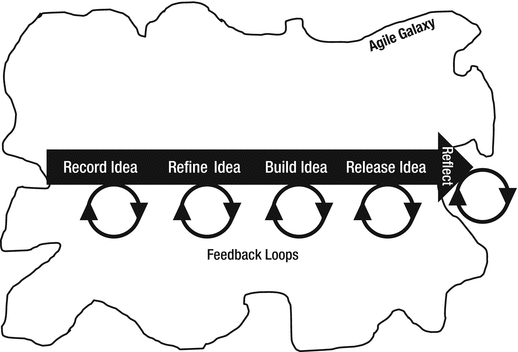
Figure 10-5. Applying feedback loops to support feedback thinking
Feedback thinking brings in many voices to validate the direction through multiple feedback loops and is crucial to help course-correct toward customer value. The primary feedback collected should be from the actual customer. The customer is the most important voice in shaping the direction of the product. Customer feedback should be the basis for driving a majority of your decisions and setting the direction of customer value.
A benefit of feedback thinking is you gain real-time information on what the customer finds valuable since what customers find valuable changes over time. Incremental thinking along with feedback thinking to build customer value allows you not only to learn what the customer wants but also to gauge if there is a shift in the marketplace. This real-time data (in other words, feedback) allows you to adapt to the ever-changing customer landscape.
Feedback thinking is an integral part of the discovery mindset. Feedback works well when paired with incremental thinking, experimental thinking, divergent and convergent thinking, and design thinking. To learn more about how to apply feedback thinking and put customer feedback into action, consider reading Chapter 14.
Design Thinking
Design thinking is an approach where teams have the space to consider the best options for solving a problem. It empowers those with the most knowledge to work through a solution. It also involves applying iterative and validated customer learning. It combines some of the incremental and divergent thinking in its approach.
Illustrated in Figure 10-6, design thinking starts by understanding the problem or opportunity by empathizing with the customer. To initially align with customers, observe them dealing with the problem or talk to those who may benefit from the opportunity. Then, based on what you learned, define (or redefine) what you think is the problem or opportunity. (See Figure 10-6.)

Figure 10-6. Design thinking approach
Design thinking applies divergent approaches to come up with options on how to solve the problem. This may include research and bringing people together to brainstorm ideas. From the top ideas, collaboratively converge by having the team self-organize around an option that the team thinks will solve the problem or address the opportunity. Convergent approaches such as affinity and red-dot voting may be used to select an option.
As you approach prototyping the chosen solution, apply a hypothesis to prove or disprove the option chosen for a more systematic way of navigating toward certainty and customer value. Test the option by using an iterative and incremental framework to validate if the hypothesis (that is, option) moves you toward the direction of customer value. The iterative framework may be one of the Agile processes that exist today.
Once an experiment is concluded, examine the results. Based on the results, either move forward with the original option or adapt toward another option. This requires customer involvement to continuously provide feedback to validate that you are moving in the right direction.
Designing thinking is a good way to bring together the employee and customer. As employees are collaboratively engaged and empowered to decide how to build customer value, customers are brought in via feedback loops to validate whether it meets customer needs.
Is It Time to Lead with the Discovery Mindset?
The discovery mindset and the thinking approaches are meant to create the behaviors for the Agile mindset to move the culture toward agility. They are great to ready-the-mind and set the tone for the behaviors that focus on customer value. Leading with mindset activities avoids the trap of believing that mechanically applying an Agile process makes you Agile. Instead, it is a great way to achieve the Agile behaviors that can help your enterprise shift to an Agile culture and lead you toward customer value.
Agile Pit Stop
Consider infusing incremental, experimental, divergent and convergent, feedback, and design thinking into the early part of your Agile transformation.
As you approach your Agile transformation or you realize that you need an injection of the Agile mindset, consider educating leadership and teams with a discovery mindset and the thinking approaches it embraces. Consider infusing incremental thinking, experimental thinking, divergent and convergent thinking, feedback thinking, and design thinking into your Agile environment in the early part of your transformation.
For additional material, I suggest the following:
The Innovative Mindset: Five Behaviors for Accelerating Breakthroughs by John Sweeney and Elena Imaretska, Wiley, 2015
Design Thinking: Four Steps to Better Software by Jeff Patton, Stickyminds, 2000
